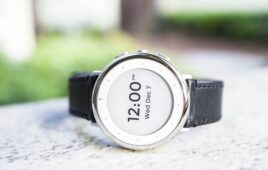Every day thousands of people around the world have their lives saved or improved thanks to someone giving blood.
But imagine how many more lives could be saved if a long-lasting blood substitute could be found, which could easily be stored at room temperature and available to all patients, regardless of their blood type.
This is the challenge a team of scientists at Essex are hoping to overcome with their Haem02 project to develop a one-size-fits-all, third generation artificial blood substitute.
Led by Professor Chris Cooper, the research team are developing an artificial blood substitute that is a safe, long-lasting, virus-free alternative to current blood transfusions available to all countries and immediately accessible at the site of natural disasters.
 Haemoglobin is the key protein in red blood cells that carries oxygen around our bodies. The Haem02 team aim to create an artificial haemoglobin-based oxygen carrier (HBOC) that could be used as a substitute for blood lost in surgery or trauma.
Haemoglobin is the key protein in red blood cells that carries oxygen around our bodies. The Haem02 team aim to create an artificial haemoglobin-based oxygen carrier (HBOC) that could be used as a substitute for blood lost in surgery or trauma.
However, attempts so far to make a safe and effective HBOC have proved problematic as outside
the protective environment of the red cell, haemoglobin can be toxic. The beauty of the product being engineered at Essex is that it is detoxified by the body’s own defences.
As Professor Cooper, a biochemist and blood substitute expert, explained, the implications of manufacturing a product with a shelf life of up to two years were huge.
“It means we could overcome some of the inherent problems with transfusions as there would be no need for blood group typing and a longer shelf life means you are able to stockpile the supplies necessary for major disasters. It also offers the opportunity for routine transfusion support in ambulances or at remote inaccessible locations,” he explained.
The quest to create artificial blood is big business, with the past 25 years seeing up to £2 billion invested globally on research into a usable alternative and many major US companies falling by the wayside in the hunt for a substitute.
After winning over £1.5 million of funding from the Medical Research Council (MRC)’s Biomedical Catalyst funding programme and the Biotechnology and Biological Sciences Research Council (BBSRC)’s Super Follow On Fund, the team from Essex are a step further towards the commercialisation of a viable artificial substitute. Their engineered haemoglobin product has already been granted patents in the US and Australia and has a patent pending in the EU.
“This is an exciting time for artificial blood research in Britain,” explained Professor Cooper. “This funding allows our team to take to first step on the road to bridging the gap between top class research and the commercialisation of a product.”
Currently over 85 million units of donated blood are given to people worldwide for use in hospitals. However, there are growing concerns about its use in routine operations. With the number of potential and active blood donors decreasing worldwide, the challenge is to have enough blood in the right place at the right time and be assured of its quality, purity and efficacy.
Some artificial blood products are licensed for use in South Africa and Russia but have failed to get a licence in the UK or in the United States.




